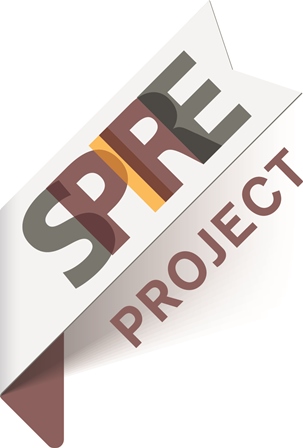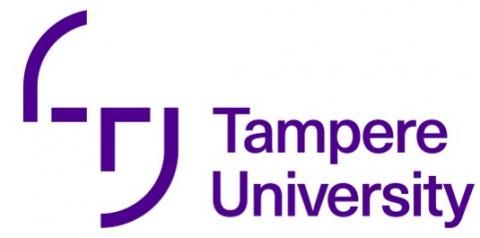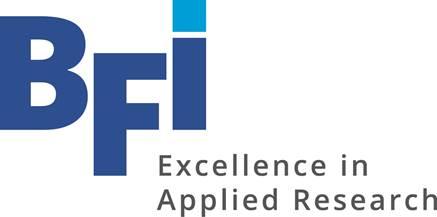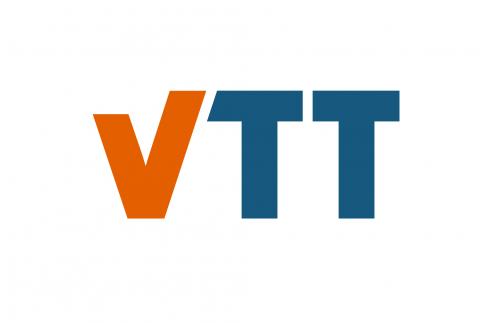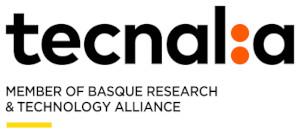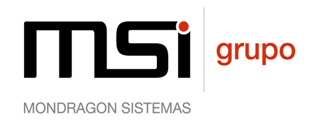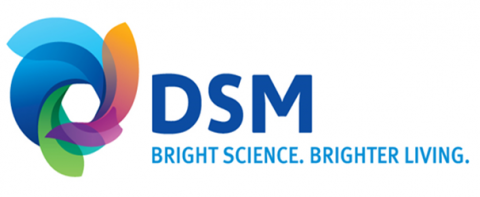Deliverables
WP1. Management
- D1.1. Deliverable quality assurance guideline (December 2016). Private deliverable. This document outlines practices enforced in the project to carry out the research as planned and to reach the best results. This document focuses on deliverable quality assurance.
- D1.2. Progress report (Macrh 2018). Private deliverable. This document gives an overview about the activities performed and the main results obtained during the first 18 months of the COOCP project. The first phase of the project has been focused on the system requirements specification and the use cases definition.
- D1.3. Progress report (March 2019). Private deliverable. This document gives an overview about the activities performed and the main results obtained during the first 30 months of the COOCP project. The project has achieved its objectives and milestones for the period.
WP2. Requirements
- D2.1 Use case definition document (January 2017). Private deliverable. This document includes the relevant characteristics of the COCOP pilot case processes and provides the basic information to be followed for the development of the next stages of the project.
- D2.2. Impact evaluation criteria (March 2017). Public deliverable. This document includes a description of the relevant impact evaluation criteria defined to measure the success of the COCOP implementations at the pilot sites of Boliden (copper production) and Sidenor (steel production).
- D2.3. System Requirements Specifications (September 2017). Public deliverable. This report presents a snapshot of the actual set of use cases of the two pilot cases of the project and requirements for the system. This information will be updated during the execution of the project in order to accompany the different developments achieved and reflect the new discoveries found during the work.
- D2.4. Characteristics of Operator Work and User Acceptance in the Process Industry (September 2017). Private deliverable. This deliverable sets the ground for the technological development from a (potential) user perspective. It presents the information about the relevant characteristics of operator work and user acceptance of the currently used optimisation systems, obtained through questionnaires and interviews. Based on these experiences, respondents stated their expectations and requirements with regard to the future COCOP system.
WP3. Architecture
- D3.1. Software architecture description for the runtime system (March 2018). Public deliverable. This report presents the general COCOP system architecture, focused on laying out the fundamental architecture directions both for the internal composition as well as external integrations.
- D3.2. Data repository and case process databases (September 2018). Private deliverable. Continuous data collection in repositories and extension of existing databases must be processed to support the development and optimisation of data based models. This deliverable presents the repositories implemented by the copper and steel pilot cases of the project.
- D3.3. Pre-processing tools for collected data (September 2018). Public deliverable. The field of data processing covers a wide range of methods and functionalities. This deliverable covers only a small part of the available functions that are used in COCOP project.
- D3.4. Knowledge processing module (March 2018). Private deliverable. This deliverable is devoted to the implementation of a knowledge management software system, which allows to share and in particular easy to find information of interest. An ontology-based approach is used for structuring of information.
- D3.5. Interface and protocol definitions (March 2018). Public deliverable. This document covers two core aspects in order to enable systems integration: communication protocols and message formats. Existing legacy systems may provide data access interfaces in various formats, so additional interfaces are specified to enable common formats for interoperability. Interface wrappers or adapters are used for legacy system integration. A quick video summary of the deliverable is also available in the Videos section.
- D3.6. Analysis tools and methods for case studies (September 2018). Private deliverable. For the application of the two pilot cases scheduled in COCOP, data from the Copper and Steel production processes are needed. This deliverable describes some of the generic methods used for the data mining and data driven modelling activities as well as the case specific analysis steps.
- D3.7. Software architecture description for the runtime system (update) (September 2018). Public deliverable. This document describes the COCOP run-time system architecture and details implementing integrations to existing systems as well as how control applications are created. This deliverable is the second updated version of two deliverables describing the software architecture, and builds on the initial architecture design of the first deliverable (D3.1) both for the internal composition as well as external integrations. A quick video summary of the deliverable is also available in the Videos section.
WP4. Modelling
- D4.1 Model specification document (May 2017). Private deliverable. This document includes a description of the modelling activities to be performed during the COCOP project, defining the scope of the models to be developed as well as the model requirements to ensure future integration within the COCOP solution.
- D4.2. Near-online sustainability indicators (September 2017). Public deliverable. This deliverable reports the principles of LCA (Life Cycle Assesment) and the data needed for the environmental sustainability indicators that enables near-online LCA for the steel and copper pilot cases. The LCA indicators take into account the value chain from raw material extraction to the end of the production process.
- D4.3. Case process simulation models (March 2018). Private deliverable. This deliverable outlines the progress made in modelling the sub-processes of the two pilot cases (copper and steel). In the copper pilot seven sub-models are being constructed whereas in the steel pilot five are under way.
- D4.4. Modelling guideline document and demonstration development kit (March 2018). Public deliverable. This document helps a stakeholder of an industrial plant to assess, whether the COCOP methodology fits in a targeted process, and guides in the system development, commissioning and maintenance. The guideline addresses the question "What needs to be done when the COCOP concept is applied to a given plant?" from several different angles. A quick video summary of the deliverable is also available in the Videos section.
- D4.5. Case process simulation models – Update (January 2019). Private deliverable. This deliverable is an update to D4.3 report and summarises the status of pilot cases, copper and steel, modelling in the project. On the sub-process level, the copper pilot case has modelled the flash smelting furnace, Peirce-Smith converters, anode furnace and slag cleaning furnace. In the steel pilot case, four data-driven models and one mathematical model (related to the secondary metallurgy, continuous casting and hot rolling sub-processes) has been developed.
- D4.6. Modelling guideline document and demonstration development kit -Update (January 2019). Public deliverable. This deliverable continues the work reported in D4.4. The work has progressed on two fronts: simulation tools supporting COCOP (a review of numerous simulators is provided) and the COCOP implementation workflow that has been extended with two activities: the Digital Maturity Analysis and Human Factors Milestones. Together with D4.4, this guideline pursues three important success factors for the COCOP installations: outstanding technical capability, full acceptance of the plant personnel, and environmental sustainability.
WP5. Optimization and implementation
-
D5.1. Optimisation problem formulations (September 2018). Private deliverable. This document describes the optimisation problem formulations for the COCOP pilot cases. For the copper case, the objective is to increase the capacity of the smelter and recovery of copper, while seeking to decrease emissions and the use of fossil fuels and raw materials. For the steel case, the goal is to find the best combination of values for the key defect-related parameters of the involved sub-processes that minimise the generation of surface defects in the final product, assuring a good performance of each sub-process.
-
D5.2. Runtime system prototype with user guide (September 2018). Private deliverable. This report introduces the concrete software prototypes made so far and summarises the actions of monitoring the social impact. The prototypes include the optimisation of steel and copper production as well as online life cycle assessment. The steel prototype aims at increasing production quality by improving monitoring and introducing different advisory tools. The copper prototype is concerned with improving the scheduling of the unit processes of a copper plant. Despite their differences, each prototype follows the COCOP architecture, demonstrating the architecture suits for multiple purposes in the industrial context.
- D5.3. Runtime system prototype with user guide (update) (September 2019). Private deliverable. This report provides a user guide for application developers (how to implement systems and applications using the COCOP architecture), introduces the software prototypes developed in the project (optimisation of steel and copper production as well as online life cycle assessment) and summarises the actions of monitoring the social impact (based on a set of social key performance indicators defined for each prototype). Despite their differences, all prototypes follow the COCOP architecture, demonstrating the proposed architecture suits for multiple purposes in the industrial context.
WP6. Co-creation, verification & validation
-
D6.1. Co-creation, combining technological and social innovation (March 2020). Public deliverable. This report analyses and summarizes the co-creation process (effectiveness and efficiency), mainly focusing on factors for a successful integration of key personnel and end users in the innovation process, and delivers a model for combined technological and social innovation in the process industry and its transferability to other branches.
-
D6.2. Verification and validation report of the runtime optimization software (March 2020). Private deliverable. This report describes the tools implemented for the steel and copper pilot cases and the activities and results obtained during the offline and online testing of the implemented tools. The copper case testing was performed in Boliden Harjavalta’s copper smelter located in Finland. The steel case testing was performed in Sidoner’s steel manufacturing facilities located in Spain. Both facilities are of industrial scale and the testing was performed during normal process operation. Offline testing included that the tools were installed in the case process IT systems and it was ensured that the system components work properly together. The online testing included the actual usage of the system by operators in production. The tests were successful and these brief test periods demonstrated that the COCOP solution is applicable and useful to industrial process plants. The report also includes an evaluation of the achievement of the Key Performance Indicators (KPIs) and the impact for each case.
WP7. Communication, Dissemination and exploitation
- D7.1 Project website (December 2016). Public deliverable.
- D7.2. Master Dissemination and Communication Plan (March 2017). Public deliverable. This deliverable includes the formulation of the COCOP dissemination strategy and the action plan focused on the first half of the project (month 1-21).
- D7.3. Master Dissemination and Communication Plan – Update (June 2018). Public deliverable. This document presents the second release of the “Master Dissemination and Communication Plan”, including the formulation of the COCOP dissemination strategy, an overview of the dissemination activities carried out during the first half of the project (month 1-21) and the action plan for the second half (month 22-42).
- D7.4. Draft business and exploitation plan (June 2018). Private deliverable. This deliverable presents a preliminary draft of the COCOP business and exploitation plan, which will be further refined during the project. Currently eleven key results have been identified and the Österwalder's canvas methodology was used for studying potential business models and business environment for the COCOP steel and copper control tools.
- D7.5. Final business and exploitation plan (March 2020). Private deliverable. This deliverable presents the final business and exploitation plan of the project. Fortyseven key results have been identified during the project. Some of these key results can be exploited individually and others as packages, forming two key exploitation results that are described in detail in the project: the tools developed for the steel and copper cases of the project. Österwalder's canvas methodology was used for studying potential business models and business environment for the COCOP steel and copper control tools. Österwalder's canvas covers nine key areas of any business: key partners, activities and resources, costs, value proposition, customer relationships and customers, (sales) channels and revenue.
- D7.6. Dissemination and communication actions survey (March 2020). Public deliverable. This document includes the description of the dissemination strategy implemented in the COCOP project (in terms of why, what, to whom, when, how and who), an overview of the dissemination activities carried out during the whole project and the main activities planned along the 2020 year in order to complete some ongoing activities and carry out some additional activities planned to disseminate the last results obtained in the project.
- D7.7. Transferability assessment analysis (March 2020). Public deliverable. This report describes the results of the transferability assessment of the COCOP concept to several sectors, with good potential for successful business and exploitation of the COCOP solution, such as the Wastewater Treatment, Chemical and Glass Manufacturing sectors. The report also presents the methodology followed for the transfer assessment that consists of three phases: I) solution definition, II) market feedback and III) Exploitation plan.


